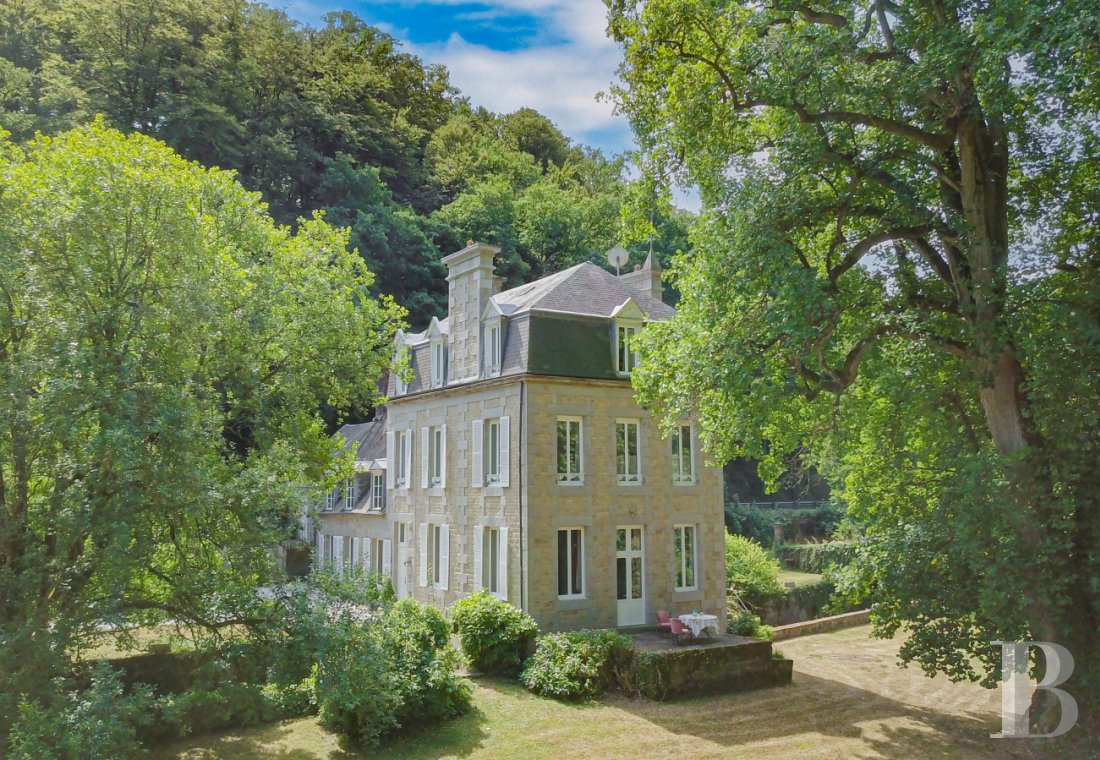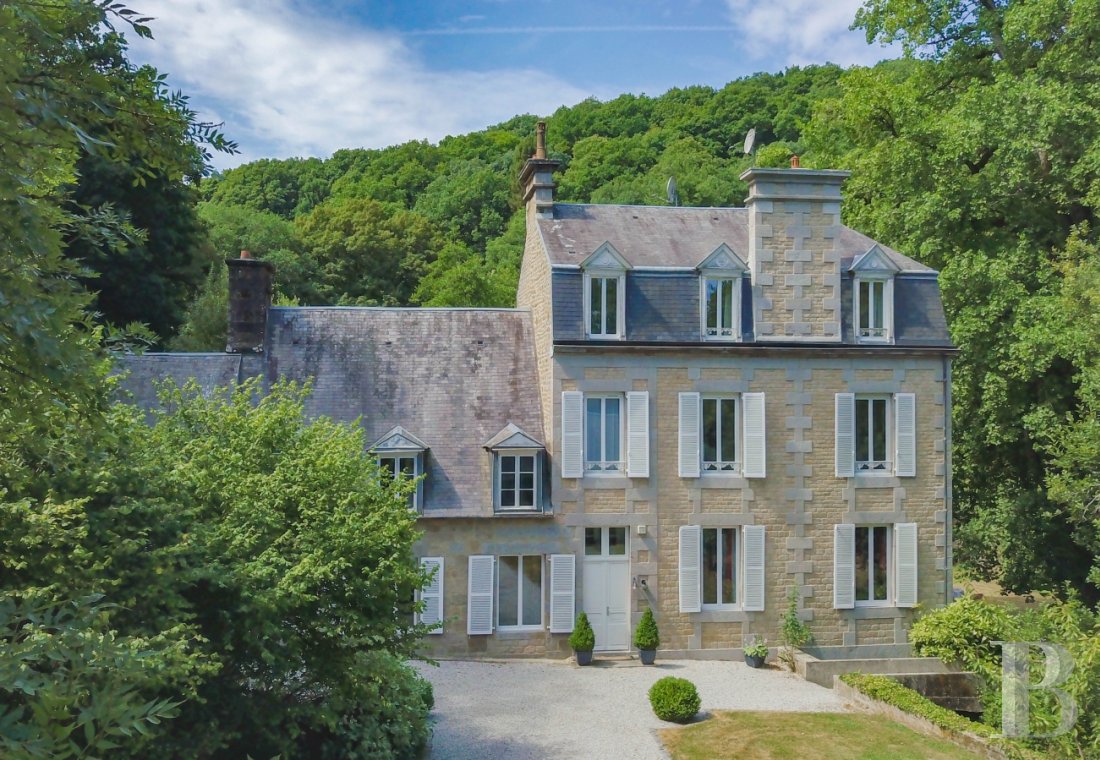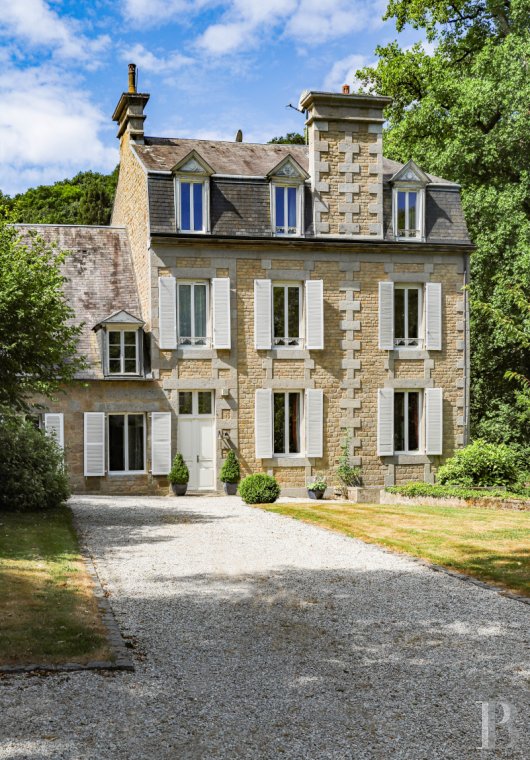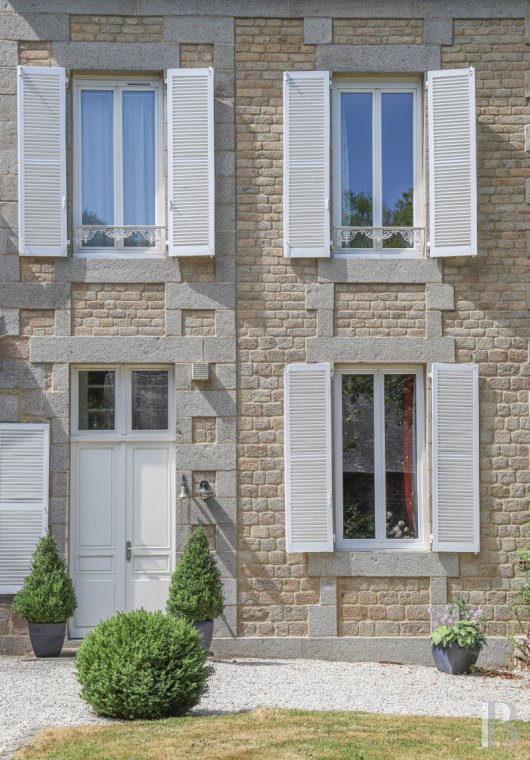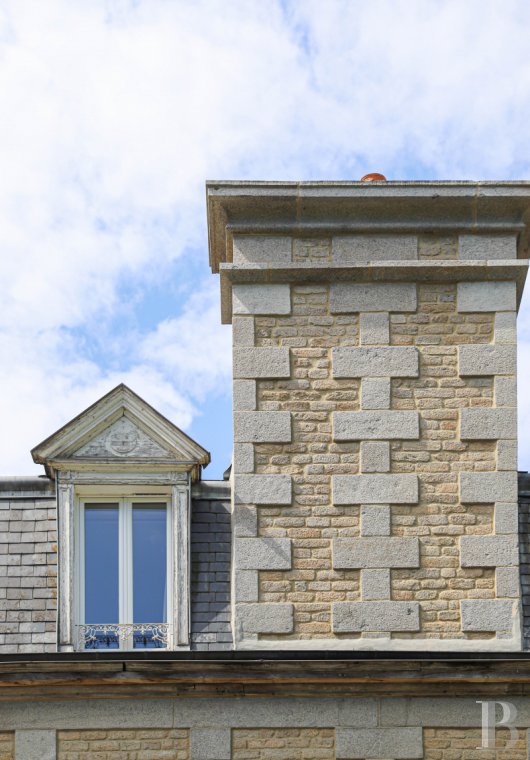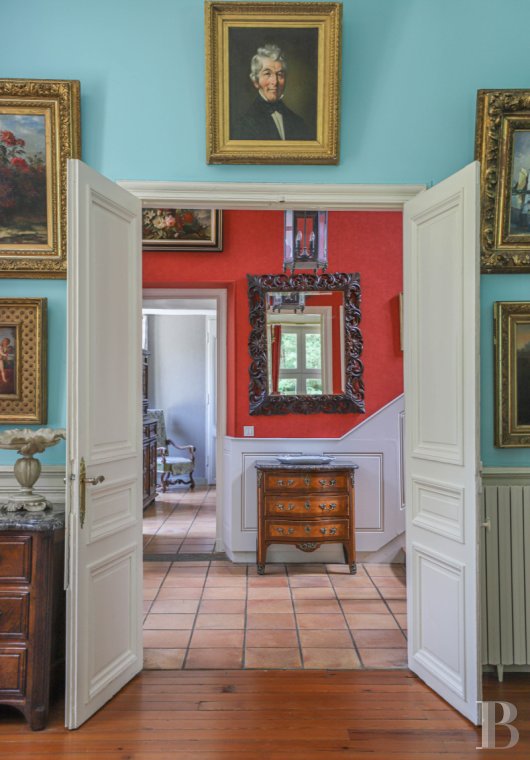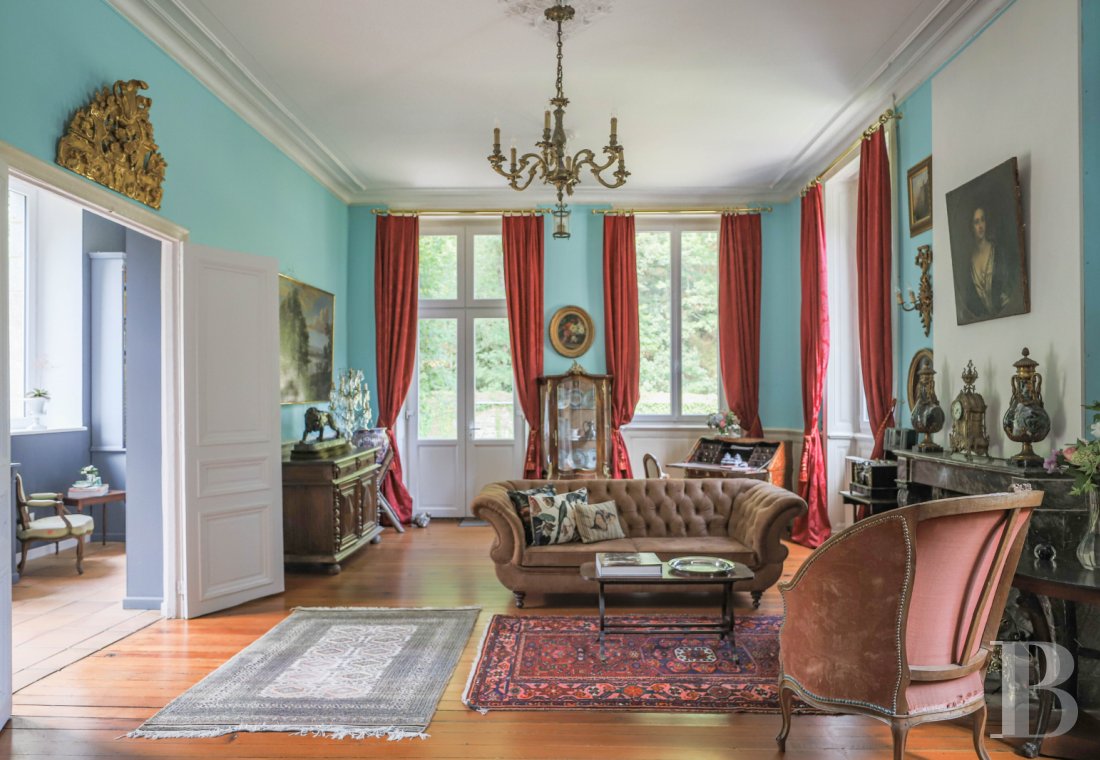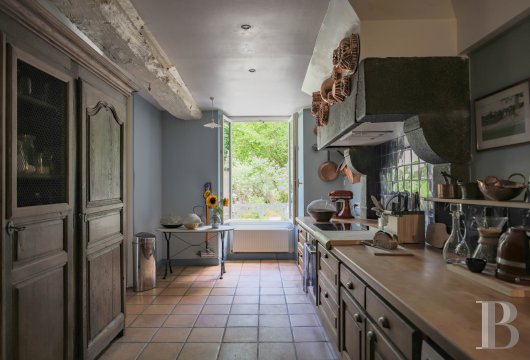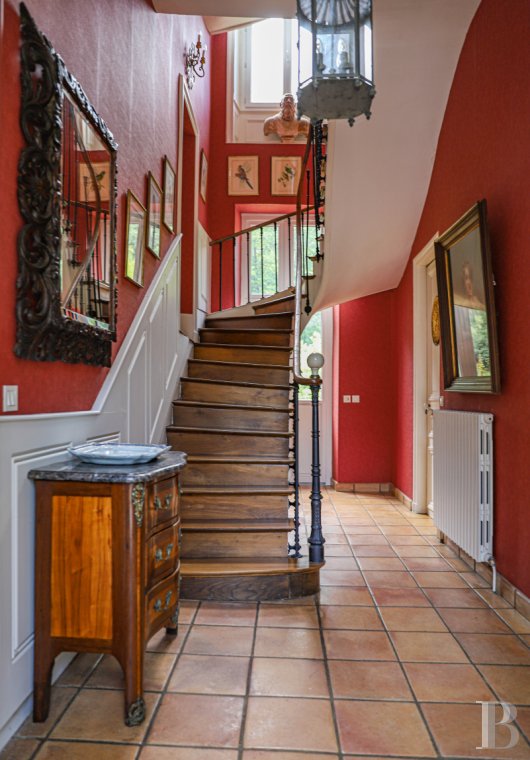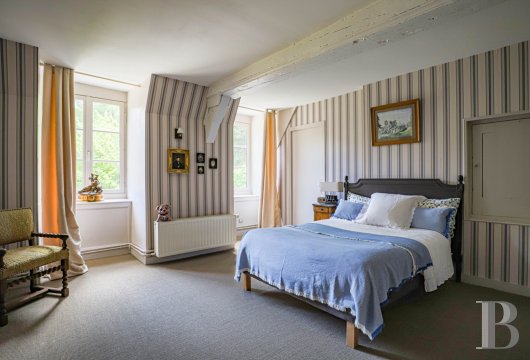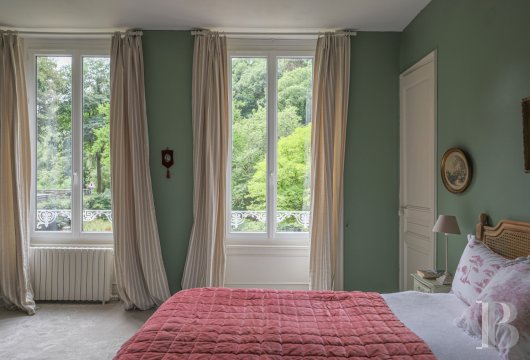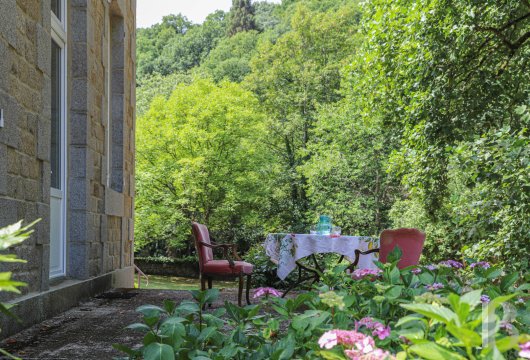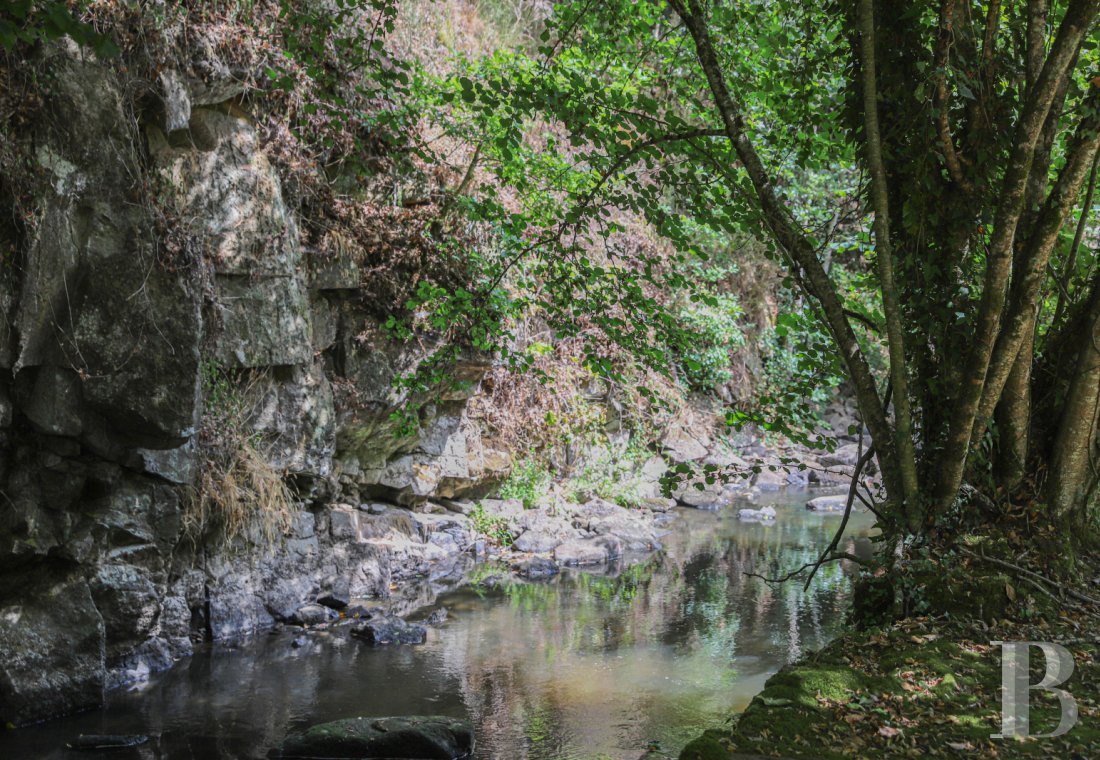Location
In undulating pasturelands, the property is located near Vire, at the confluence of two rivers, topped by rocky cliffs and coppiced woods. The train station is 5 minutes away and connects to Paris in 2h40. The beaches of the Côte de Nacre or Utah Beach can be reached by car in just over an hour. Caen and the beaches of Granville are a 50-minute drive away.
Description
The mansion
It comprises two buildings standing in the same line. The first dates back to the 17th century. It is on two levels with some attic space. The second 18th century building is higher and offers three levels, including the attic. The roofs are slate. The first one has two pitches with hip dormers. The second is a Mansard roof and features a large chimney stack and high dormers, topped by triangular pediments. The walls are coursed schist masonry, and the window frames and corner quoins are dressed granite blocks. The facades are divided into three bays. The entrance door is at the intersection of the two buildings.
The ground floor
An entrance area precedes a full-width hallway with the start of a wooden staircase and toilets. The hallway leads to a living room in the newer part and a dining room in the older part. The extensive living room enjoys a considerable ceiling height. It is lit on two sides by high windows. The walls are half-panelled, the ceiling is adorned with cornices, and the floor is straight parquet. The marble fireplace is surrounded by two windows. A double glass door opens onto the terrace and the garden beyond. Another door leads to a long room, also lit by high windows, which has been converted into a library on one side and a laundry room on the other. A glass door opens to the outdoors, where a balcony overlooks the stream that runs under the house. The dining room has a more intimate character. It is also illuminated by a glass door opening out to the rear of the house. A wooden staircase leads to the first floor. The connecting kitchen stretches over the entire width of the house. The old dressed granite fireplace has been preserved and integrated into the new interior design. A door leads to the outbuilding set at right angles to the rear of the house where the boiler room is located.
The first floor
Two staircases join the first level of each building. A connecting door at mid-level communicates between the two buildings. The first floor of the 17th century building can be turned into a self-contained flat with three rooms, including a shower room and a space that could be converted into a kitchen. Part of this level has sloping ceilings. From the small landing, a staircase, hidden behind a door, leads up to the convertible attic. A separate entrance is accessed from the courtyard via an external stone staircase. The first floor of the 18th century building comprises a large bedroom and bathroom with toilet, as well as a large boudoir and a closet. All the rooms feature high windows letting the light pour in, protected by small wrought iron railings.
The second floor
The staircase leads to a long corridor serving all the rooms, including a shower room with toilet and three bedrooms. Marble fireplaces have been preserved in one corner of each bedroom. They are lit by high dormer windows. Behind a door, a staircase leads to the attic.
The old mill
It was originally one of the many paper factories built along the course of the Virene from the 17th century onwards. At the time, French publishing was booming and Normandy was growing into a major production centre. The old mill is of coursed schist masonry and dressed granite blocks. The solid building features offset floors. A stone staircase leads down into a lower room, while another is on the side of the wall. The remains of former arched openings are still visible. The reach has been diverted and some rooms closed off. The slate roofs have been redone. Today, the mill houses a large garage for four vehicles on one side and rooms with the remains of the old machinery on the other.
The park
The park stretches along the river, alongside the two buildings and their surroundings, from which it is separated by the reach. Starting from the diversion, a grove covers a large area and a majestic, centuries-old American tulip tree is planted in the middle of the lawn. The surrounding wall is lined with a remarkable old 'Wedding Day' rose, which forms a white wedding train. It is adjacent to the old greenhouse and an opening in the wall above the river, a remnant of the former conveniences. The grounds are interspersed with hazelnut trees, walnut trees, apple trees, cherry trees, maple trees and a large purple beech tree. Other species surround a pond. Upstream, a small number of islets also belong to the property. They were once built on and cultivated.
Our opinion
The river seems to be an integral part of the property. Beyond the wall, its bright, clear flow rushes through the steep rock, under the antlers and canopy of the tall trees. A poetic and mysterious vision, in contrast to the open and well laid out spaces that border the house with its high facade emerging from the vegetation. The elegant country mansion, with its period décor, is a remarkable illustration of the architectural style in vogue in 17th and 18th century Normandy. Life in this property is comfortable, with ample space and light, thanks to the many large windows that open onto the park. Here, near the reach and the mill, flowers and children can flourish in the shade of the American tulip tree.
Reference 342903
| Land registry surface area | 1 ha 50 a |
| Main building surface area | 270 m2 |
| Number of bedrooms | 6 |
French Energy Performance Diagnosis
NB: The above information is not only the result of our visit to the property; it is also based on information provided by the current owner. It is by no means comprehensive or strictly accurate especially where surface areas and construction dates are concerned. We cannot, therefore, be held liable for any misrepresentation.


